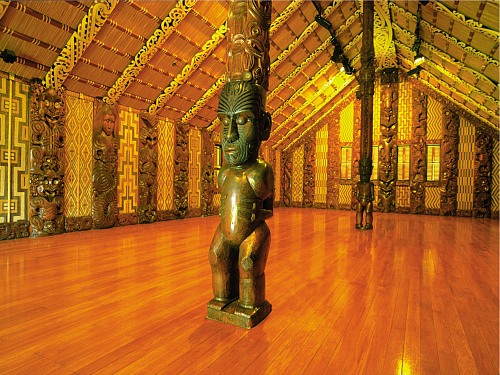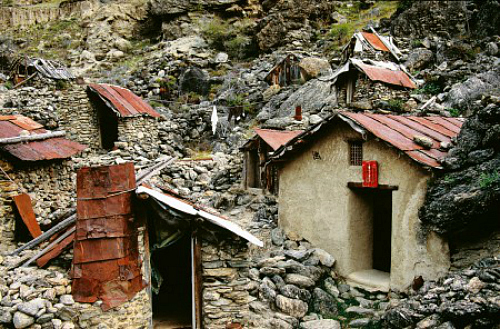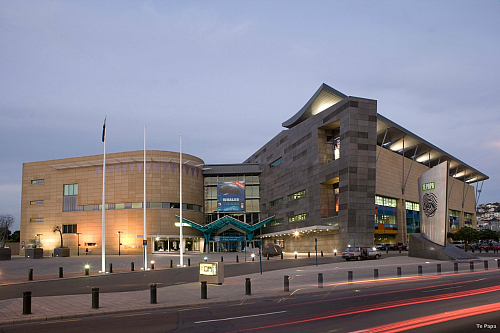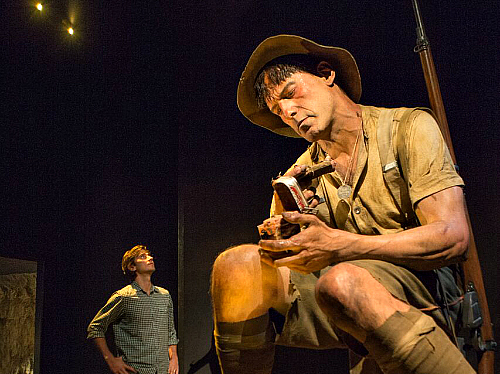BEST VIEWED IN LANDSCAPE MODE ON MOBILE DEVICES
U.S.FTC GUIDELINES PLEASE NOTE: we act as an affiliate for several companies that feature on our website. In some cases we may earn a commission from referrals to those companies. For further information please refer to our Privacy and Disclaimer policies which can be found in the "US" tab.
U.S.FTC GUIDELINES PLEASE NOTE: we act as an affiliate for several companies that feature on our website. In some cases we may earn a commission from referrals to those companies. For further information please refer to our Privacy and Disclaimer policies which can be found in the "US" tab.
Here is a snapshot of New Zealand History. Although New Zealand is known as the World's youngest nation, it has had a sometimes turbulent past.
Introduction
New Zealand history dates back around 700 years, with recent evidence
suggesting settlement around 1280 by Polynesians.
The descendants of
these people became known as the Maori, and their influence on New Zealand culture has been enormous. These original inhabitants made good
use of an abundance of large game such as the moa, a large flightless
bird similar to the ostrich. However, hunting forced these larger
animals to extinction around 1500. As this happened it became necessary
for the Maori people to look at other food sources, and horticulture and
seafood became important. In the warmer northern regions, taro, kumera
(sweet potato) and yams became important staples, whilst in the colder
southern regions, plants such as fernroot were used.
Maori leaders (chiefs) were usually chosen on a hereditary basis,
although challenges were sometimes made by those with better leadership
abilities.
The structure of Maori society is based around the whanau (extended
family-pronounce far-now) and the hapu (a group of whanau). Groups of
hapu are known as iwi (tribes).
Although conflict between hapu was common, they would also co-operate where they could for their mutual good.
Maori influence on New Zealand history and culture is preserved and
expressed in various art forms such as the ta moko (tattoo), various
forms of dance such as the haka, weaving, and detailed woodcarving.
Maori legend of the creation of New Zealand:
The Impact Of European Settlement On New Zealand History
The first European explorers arrived in New Zealand in 1642, and New
Zealand was regularly visited by European traders and missionaries
throughout the 18th century. These first Europeans, who had a
significant influence on New Zealand history, were the crew of the Dutch
explorer Abel Tasman, who arrived in two ships, the Heemskerck and the
Zeehaen. They anchored at the northern end of the South Island in an
area known as Golden Bay (although Tasman named it Murderers Bay).
Tasman sketched parts of the west coasts of the North and South Islands,
and called them Staten Landt, named after the States-General of the
Netherlands. Dutch cartographers changed the name to Nova Zeelandia,
from Nieuw Zeeland, after the Dutch province of Zeeland. It was
subsequently Anglicised to New Zealand by the British naval captain and
explorer James Cook during his 1769-1770 voyage.
From the late 1700s, trading, whaling and sealing ships from France,
Britain and America visited New Zealand waters, and traded goods with
the Maori. Most contact between them was peaceful, and in the 1800s
missionaries attempted to convert Maori to Christianity. The impact of
European culture on Maori was varied. In some inland areas there was
very little impact, but where Europeans were encountered more
frequently, such as in Northland at the top of the North Island, there
was considerable change. The introduction of the musket greatly
influenced warfare between Maori iwi, to such an extent that some tribes
without muskets were almost wiped out by those with guns. Maori would
trade great quantities of goods in exchange for a single musket.
Eventually most tribes acquired guns, leading to equality and a
reduction in conflict, in what had been a time of turmoil in New Zealand
history.
Settlement by Europeans continued through the early 1800s, primarily in
the North, and the first full-blooded European infant, Thomas King, was
born in 1815 in the Bay of Islands.
In an attempt to control lawlessness amongst European settlers, the
British government appointed James Busby as Official Resident in 1832,
and in 1834 he persuaded Maori chiefs to sign the Declaration of
Independence in 1835, which was acknowledged by King William IV.
However, the reality was that Busby had little tangible support from the
British establishment and was thus ineffective in controlling the
European population.
In 1839, in another important step in New Zealand's history, the New
Zealand Company announced plans to establish various colonies in New
Zealand. This resulted in the arrival of Captain William Hobson who
attempted to persuade Maori to hand over their sovereignty to the Crown.
As a result, on 15 June 1839 a new Letters patent was issued to expand
the territory of New South Wales to include all of New Zealand. George
Gipps, the Governor of New South Wales was appointed Governor over New
Zealand. This provided a clear indication of Britain's intentions.

The Importance Of The Treaty of Waitangi On New Zealand History
On 6 February 1840, an event occurred which would alter the course of
New Zealand history. Hobson and about forty Maori chiefs signed the
pivotal Treaty of Waitangi in the Bay of Islands. Copies were
subsequently taken around the country to be signed by other chiefs, but a
significant number refused to sign or were not asked. In total, more
than five hundred Maori eventually signed.
The Treaty gave Maori sovereignty over their lands and possessions and
all of the rights of British citizens. What it gave the British in
return is a matter of interpretation, dependent on the language-version
of the Treaty that is referred to. The English version can be said to
give the British Crown sovereignty over New Zealand but in the Maori
version the Crown receives kawanatanga, which, arguably, is a lesser
power, and dispute over the true meaning and the intent of either party,
and the influence on New Zealand's history and culture, remains an
issue.
Hobson died in September 1842. The new governor, Robert Fitzroy, took
some legal steps to recognise Maori custom. And, his successor, George
Grey, promoted rapid assimilation. The practical effect of the Treaty
was, in the beginning, only gradually felt, especially in Maori regions.
New Zealand History-Governance
New Zealand was administered through 1840 as a part of the Australian
colony of New South Wales, but became a colony in its own right on 3 May
1841. It was divided into provinces, which were reorganised in 1846 and
in 1853, when they acquired their own legislatures. But they were then
abolished in 1876. The New Zealand Constitution Act 1852 gave the
country some measure of self-government.
From around 1840 European settlement was quickly on the increase. Most
immigrants came from England, Wales, Scotland and Ireland. There was
also representation to a lesser extent from India, the United States,
and other parts of Europe. By 1911, the number of white settlers (called
Pakeha by Maori) totalled a million.
Whilst Maori welcomed Pakeha for the trading opportunities and guns,
they underestimated the volume of settlers that would come. Many tribes
lost much of their land and autonomy through government acts. To the
Maori, their land was a connection with their ancestry, and was held
communally. Pakeha had little understanding of this concept. During the
New Zealand Land Wars of the 1860s and 1870s, the Taranaki and Waikato
regions were invaded by colonial forces, and Maori of these regions had
their land confiscated. This period in New Zealand history left
bitterness that lingers even today.
Other tribes prospered, and in fact until about 1860 the city of
Auckland sourced most of its food from Maori, many of who owned flour
mills.
Relations were generally peaceful during this period in New Zealand
history, but there were conflicts over who had power in particular areas
(the Governor or the Maori chiefs).
In 1867 four Maori seats were established in parliament, and evidence of
co-operation between Maori and Pakeha in tourist ventures around
Rotorua on the North Island.
In the late 1800s the parliament of New Zealand introduced several
initiatives including old age pensions and voting rights for women. As
the 20th century progressed, more and more Maori began moving to the
cities. With a more visible presence, the Maori people fought for a
greater recognition of the Treaty of Waitangi and of their rights.
Although the North Island was troubled at times, the South Island, with
it's relatively small Maori population, was mostly peaceful.

New Zealand History-"There's Gold In Them There Hills"
In 1861 gold was discovered at Gabriel's Gully in Central Otago,
sparking a gold rush. During the 1870s and 1880s, a gold rush in the
South Island attracted several thousand Chinese immigrants. Although
their immigration was supported by the local Otago Provincial
government, the Chinese workers quickly became a target for white
settlers, eventually resulting in laws which discouraged them from
immigrating to New Zealand.
Dunedin became the wealthiest city in New Zealand, and there was a
strong move by those in power in the South to cease funding the land
wars in the North. As a result moves were made in 1865 to give the South
Island independence, but the Bill was defeated.
Until around 1900, the South Island accounted for the majority of the
Pakeha population. However, from that point to the present time, the
North Island took the lead.
New Zealand History - Building Trade
During the 1890s, major change occurred. The advent of refrigerated
shipping enabled New Zealand to move from wool and local trade, to an
export based trade focussing on dairy and meat exports to Britain. This
remained the focus until the 1970s.
New Zealand decided not to join the Commonwealth of Australia in 1901,
and instead evolved from being a colony to a separate "dominion" in
1907, gaining equal status with Australia and Canada.
World Wars and New Zealand History
Many New Zealanders fought in World War I, and in fact New Zealand
forces took Western Samoa from Germany. Western Samoa was administered
by New Zealand until Samoan Independence in 1962.
The Great Depression of the 1930s hit New Zealand hard, and the
resulting drop in exports lead to massive unemployment. At this stage in
New Zealand's history, there were no unemployment payments available.
Workers were instead given relief work in areas such as roadwork, park
improvement, and farm work
.
The conservative Liberal-Reform coalition proved unpopular with the
public and in 1935 the First Labour Government was elected, at a time
when support for them had roughly doubled compared to pre-depression
times. By 1935 the economy had improved and the new government
established a full welfare state, which included free health care and
education and state assistance for the elderly, infirm, and unemployed.
This program has been retained and modified by successive Labour and
National governments.
A study of New Zealand history will show that the country has always
taken a positive attitude towards assisting allies in times of war, and
in fact New Zealand contributed some 120,000 troops to World War 11.
These troops fought mainly in Europe. Meanwhile, New Zealand called on
Britain and the United States to protect New Zealand from the Japanese
forces, who fortunately never reached as far as the New Zealand mainland
(except with some highly publicised scouting missions). New Zealand's
co-operation with the United States helped set a direction of policy
which resulted in the ANZUS Treaty between New Zealand, America and
Australia in 1951, which was to stay in place until disagreements over
nuclear armaments decades later.
Many Maori fought in World War II, and many others moved from their
rural homes to the cities to take up jobs vacated by Pakeha servicemen.
This also saw the beginning of a mass Maori migration to urban areas, so
much so that by the 1980s 80% of the Maori population lived in urban
areas, in contrast to only 20% before the war. This resulted in better
pay, standards of living and education for most Maori, but also lead to
problems of racism and discrimination. By the late 1960s, a protest
movement had emerged to combat racism, promote Maori culture and seek
fulfilment of the Treaty of Waitangi, reinforcing its place in New
Zealand history.
The urbanisation of the country was far from restricted to Maori. In the
late 1940s, town planners noted that two thirds of the population lived
in cities or towns.
New Zealand History-1960s And Beyond
In 1961, the share of New Zealand exports going to the United Kingdom
was still at over 5o%, with another 15% going to other European
countries. However, in 1973 Britain joined the European Economic
Community, which forced New Zealand to source other export markets, and
to reassess its place in the world. Robert Muldoon, Prime Minister from
1975 to 1984, had a conservative and antagonistic style which helped
create an atmosphere of conflict in New Zealand. This was expressed
during the violent 1981 Springbok rugby Tour. Muldoon did however
introduce some innovative strategies such as the Closer Economic
Relations agreement with Australia.

The Fourth Labour Government also made other revolutionary changes,
making the country a nuclear-free zone and effectively leaving the ANZUS
alliance. Immigration policy was liberalised, which allowed an influx
of immigrants from Asia (previously most immigrants to New Zealand had
been European and especially British). Other government innovations
included greater recognition of the Treaty of Waitangi through the
Waitangi Tribunal, The New Zealand Bill of Rights, Homosexual Law
Reform, and the Constitution Act 1986. Voters however, were unhappy with
the level and speed of change, and in 1990 elected a National
government, which was led by Jim Bolger. The new government continued
the economic reforms of the previous Labour government, much to the
displeasure of the public, who voted to change the electoral system to
Mixed Member Proportional (MMP), a form of proportional representation.
New Zealand's first MMP election was held in 1996. Following the
election National was returned to power in coalition with the New
Zealand First Party.
The Fifth Labour government led by Helen Clark was elected in 1999. It
placed more of an emphasis on social policy and outcomes. For example,
employment law was modified to give more protection to workers, and the
student loan system was changed to eliminate interest payments for New
Zealand resident students and graduates. Helen Clark's Labour government
remained in power for nine years before being replaced in 2008 by New
Zealand's fifth National government led by John Key.
Although still largely dependent on the fruits of the land, tourism has
become a major industry, and the country has been successful in
attracting several major film productions, most notably the Lord of the
Rings trilogy, directed by New Zealander Peter Jackson.
So, as you have read, New Zealand's history has been at times turbulent,
and at times inspiring. As it moves into a new century, New Zealand is
well placed to ensure that it moves forward as a modern, prosperous
nation.
We hope that you have enjoyed this snapshot of New Zealand history.
Where to learn more
The National Museum of New Zealand, Te Papa, is perhaps one of the world's best museums.
If you are in Wellington, set a day aside to visit.
There are various tours available and it's a must see.


